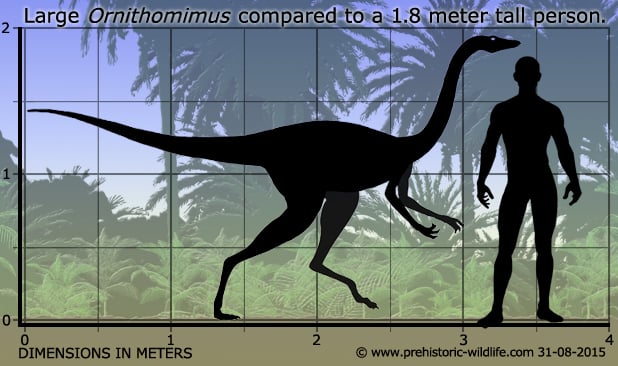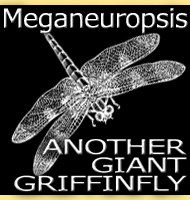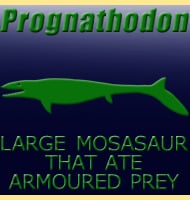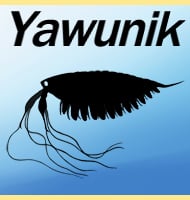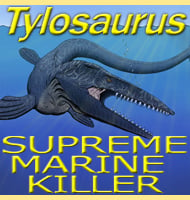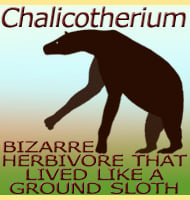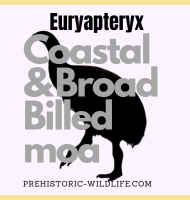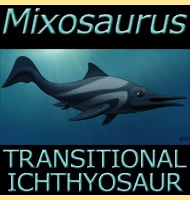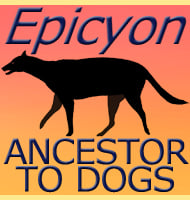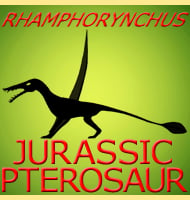In Depth
Named in 1890 from a partial hand and foot, Ornithomimus became the first known ornithomimid, which is why it is considered the type genus of the Ornithomimidae. The ornithomimds (also sometimes called ‘ostrich dinosaurs’) were small dinosaurs that usually ranged between three and four meters long, although some were slightly larger. During the late Cretaceous ornithomimds seem to have been particularly widespread across North America and Asia where they relied upon speed for survival in habitats that were dominated by tyrannosaurs, and shared with horned and armoured dinosaurs like ceratopsians and ankylosaurs.
Amongst the dinosaurs Ornithomimus has one of the most complicated taxonomic histories that continue to cause much confusion amongst researchers. In a nut shell, because it was one of the first ornithomimds discovered, Ornithomimus along with Struthiomimus were effectively used as wastebasket taxons where any remains remotely resembling the earlier material were almost automatically attributed to one of these genera as a new species. This also happened for the first two dinosaur genera ever named, Megalosaurus and Iguanodon, although perhaps a better analogy would come from the pterosaurs Pterodactylus and Rhamphorhynchus. Both of these genera once had an incredible number of species attributed to them, just for most of them to be found to be the same as the type species or actually different genera completely.
The classification of Ornithomimus didn’t really get under way properly until 1972 when palaeontologist Dale Russel undertook a review of the ornithomimids. The result of Russel’s study was that Ornithomimus along with Struthiomimus were each themselves valid genera and that Ornithomimus had two distinct species, O. velox and O. edmontonicus, even though the line between these two species was occasionally blurry. Russel additionally created two new ornithomimid genera of Archaeornithomimus and Dromiceiomimus on the basis that some Ornithomimus remains could not be placed with the genus.
Other palaeontologists have continued to study Ornithomimus and other closely related genera, but results and conclusions have been mixed between different researchers. Further species have been named only to be contested by others who claim there is not enough difference. Additionally the earlier creation of Dromiceiomimus is now seen as invalid and this genus is now usually attributed as a synonym to Ornithomimus where the fossil material originally belonged. It is hard to say for certain what the future holds for Ornithomimus, although its place a valid genus is not in dispute. Further remains and study however may yet bring a change in the number of valid species. It is actually a lot easier to talk about Ornithomimus as a dinosaur rather than its taxonomic history. Like with all other ornithomimids, Ornithomimus is noted for having long legs, the lower portions of which were considerably longer than the femur. This is a sure sign that Ornithomimus was a dinosaur that was built for speed and with the exception of other ornithomimids, was probably the fastest dinosaur in its ecosystem. This speed would have probably been enough to keep it out of the way of big predators like Tyrannosaurus and Albertosaurus, although it would be interesting to see how Ornithomimus faired against smaller and faster predatory dinosaurs, including juveniles of the big tyrannosaurs. To help reduce weight the bones of Ornithomimus, like other ornithomimids, were hollow. Another adaptation to fast running is the tail which in life would have been carried off the ground and supported with tendons so that it could be used as a stiff balancing aid.
The obvious tactic for a predator to employ against a fast animal like Ornithomimus would be ambush, dashing out from cover and closing the gap between themselves and their target before the prey could turn and use their speed to escape. This was not all that easy to do either however, as Ornithomimus had a head that was carried high from the body by a long neck. This meant that Ornithomimus could see over cover and see other dinosaurs approaching from a long way off which would make sneaking up on one very difficult. The large orbital fenestrae of the skull also suggest proportionately larger eyes to fit within them. This indicates that Ornithomimus would have had keen vision, possibly even for seeing at night. Analysis of sceleral rings has indicated a cathemeral lifestyle, which means that Ornithomimus would have been active for short periods during both the day and night time hours.
Another feature of the skull is the enlarged brain cavity that also suggests that Ornithomimus had a large and well developed brain for its size. Although it is tempting to say that this may have made Ornithomimus an intelligent dinosaur, it is not so much the case of how big the brain is as a whole, but the development of certain parts. The development of the brain in Ornithomimus is usually taken as being towards proprioception, or in simple terms better control over the body and its movements. This is a very logical conclusion when you think that a bipedal dinosaur that was capable of breaking the speed limit on some of our roads would need excellent coordination when running over rough terrain while being chased by a predator. Rather than having more typical jaws with teeth, Ornithomimus actually had a mouth that was more like a beak which could have been used for a variety of feeding styles. As a theropod Ornithomimus is thought to have descended from carnivorous ancestors, but it is still uncertain if it ate meat as well. The beak-like mouth could have been used to selectively browse certain parts of plants, or alternatively Ornithomimus could have used it to pick up insects. Ornithomimus may have also preyed upon small animals like lizards and primitive mammals that it may have caught by using its long neck to reach into the undergrowth. It is also possible that all of the above might be correct and that Ornithomimus was an omnivore which browsed the landscape eating whatever it could find and thereby not competing with other more specialised groups of dinosaurs. Regardless of what it ate, the lack of teeth would at least suggest that Ornithomimus swallowed food whole.
The arms of Ornithomimus are also quite long with long fingers to match. It has been suggested that these long arms were used to reach out and grab branches in the same way that a sloth feeds, although it’s uncertain how much benefit if any Ornithomimus would have gained from this because it already had a long relatively long neck for this purpose already. It’s possible that the long arms and hands may have played a bigger part in prey capture, since the mouth lacked teeth to grip hold of prey. If Ornithomimus raided nests for eggs as has been suggested in the past, then it may have held onto eggs within its hands while the beak-like mouth broke the shell and dipped into the yolk within.
One area where Ornithomimus differs from other ornithomimids is that it had a shorter actual body length. This may indicate an adaptation for greater agility in this genus as a shorter bodied animal would be able to make tighter turns than a longer bodied animal. Another area of study now concerning Ornithomimus is if it actually had hair like feathers over its body. For a long time there was no evidence to directly support the idea for feathers on Ornithomimus, but new specimens and studies of Ornithomimus are increasingly suggesting that Ornithomimus, and perhaps most if not all ornithomimid dinosaurs actually had feathers. These feathers seem to have been small and pernaceous meaning that they were not suited to flight and served more of an insulatory version. Feather data for Ornithomimus is still in its early stages, but Ornithomimus seems to have mostly feathers upon the body, tail and neck. No feathers seem to have been present upon the legs.
Further Reading
– Description of new dinosaurian reptiles. – The American Journal of Science, series 3 39:81-86. – Othniel Charles Marsh – 1890. – Notice of new reptiles from the Laramie Formation. – American Journal of Science 43:449-453. – Othniel Charles Marsh – 1892. – A new Ornithomimus with complete abdominal cuirass. – The Canadian Field-Naturalist 47(5): 79-83. – C. M. Sternberg – 1933. – A specimen of Ornithomimus velox (Theropoda, Ornithomimidae) from the terminal Cretaceous Kaiparowits Formation of southern Utah. – Journal of Paleontology, 59(5): 1091-1099. – DeCourtean & Russel – 1985. – A juvenile Ornithomimus antiquus (Dinosauria: Theropoda: Ornithomimosauria), from the Upper Cretaceous Kirtland Formation (De-na-zin Member), San Juan Basin, New Mexico. – New Mexico Geological Society Guidebook, 48th Field Conference, Mesozoic Geology and Paleontology of the Four Corners Region. 249-254. – Sullivan – 1997. – A reevaluation of the genus Ornithomimus based on new preparation of the holotype of O. velox and new fossil discoveries. – Journal of Vertebrate Paleontology. – L. Claessens, M. Loewen & Z. Lavender – 2011. – A redescription of Ornithomimus velox Marsh, 1890 (Dinosauria, Theropoda). – Journal of Vertebrate Paleontology. – Leon P. A. M. Claessens & Mark A. Loewen – 2015. – A densely feathered ornithomimid (Dinosauria: Theropoda) from the Upper Cretaceous Dinosaur Park Formation, Alberta, Canada”. Cretaceous Research. 58: 108–117. – Aaron J.van der Reest, Alexander P.Wolfe & Philip J.Currie – 2016.
